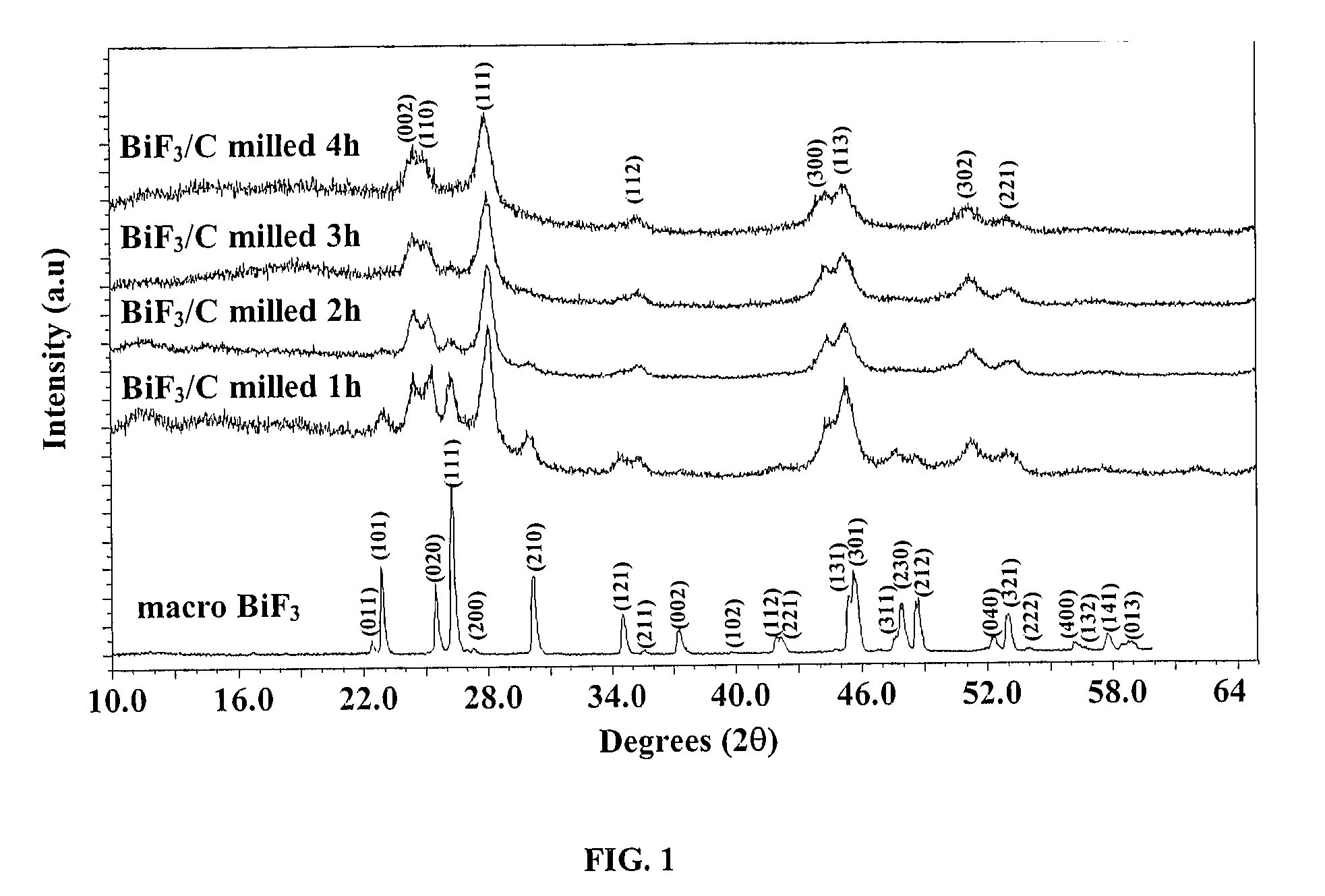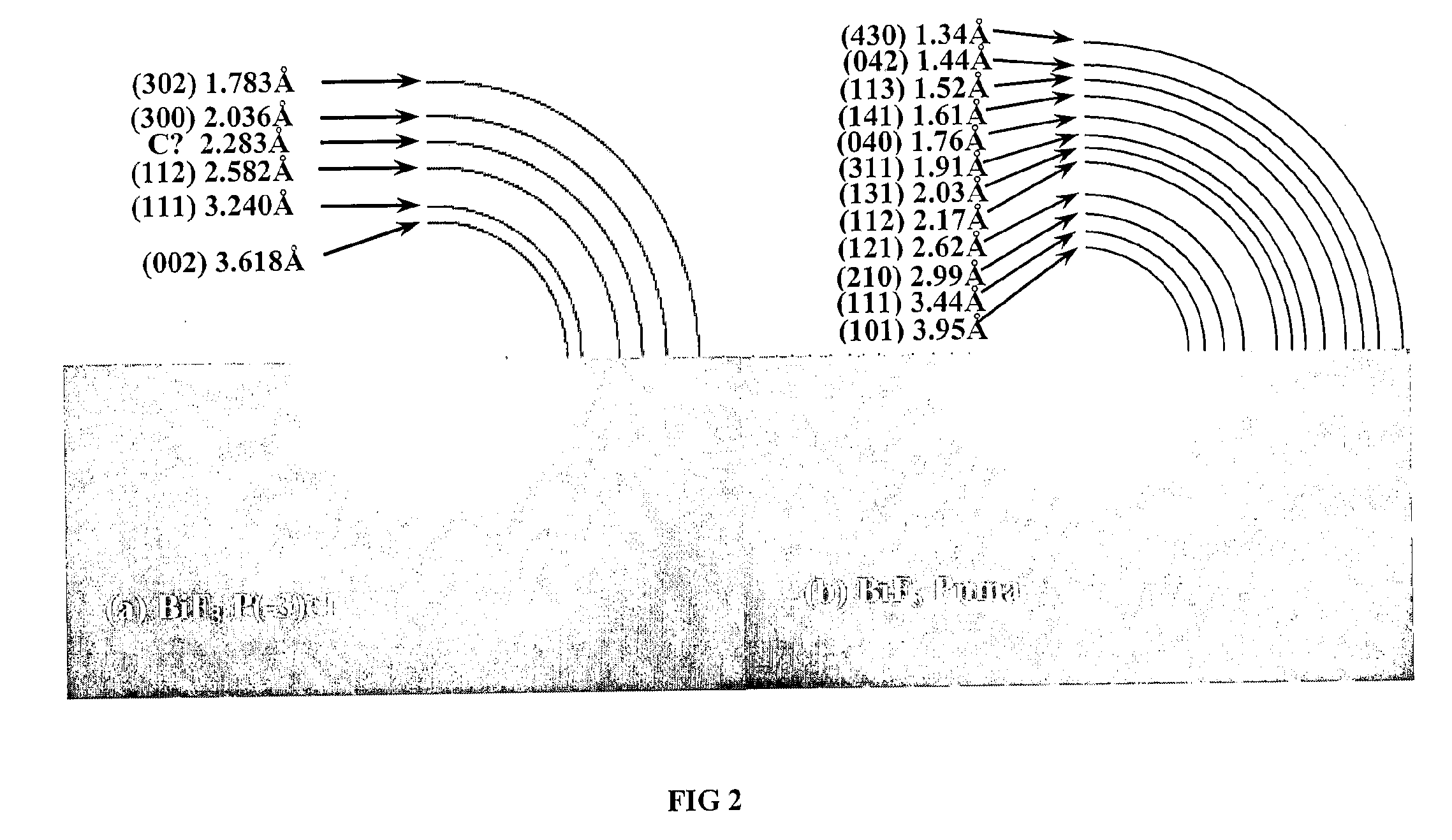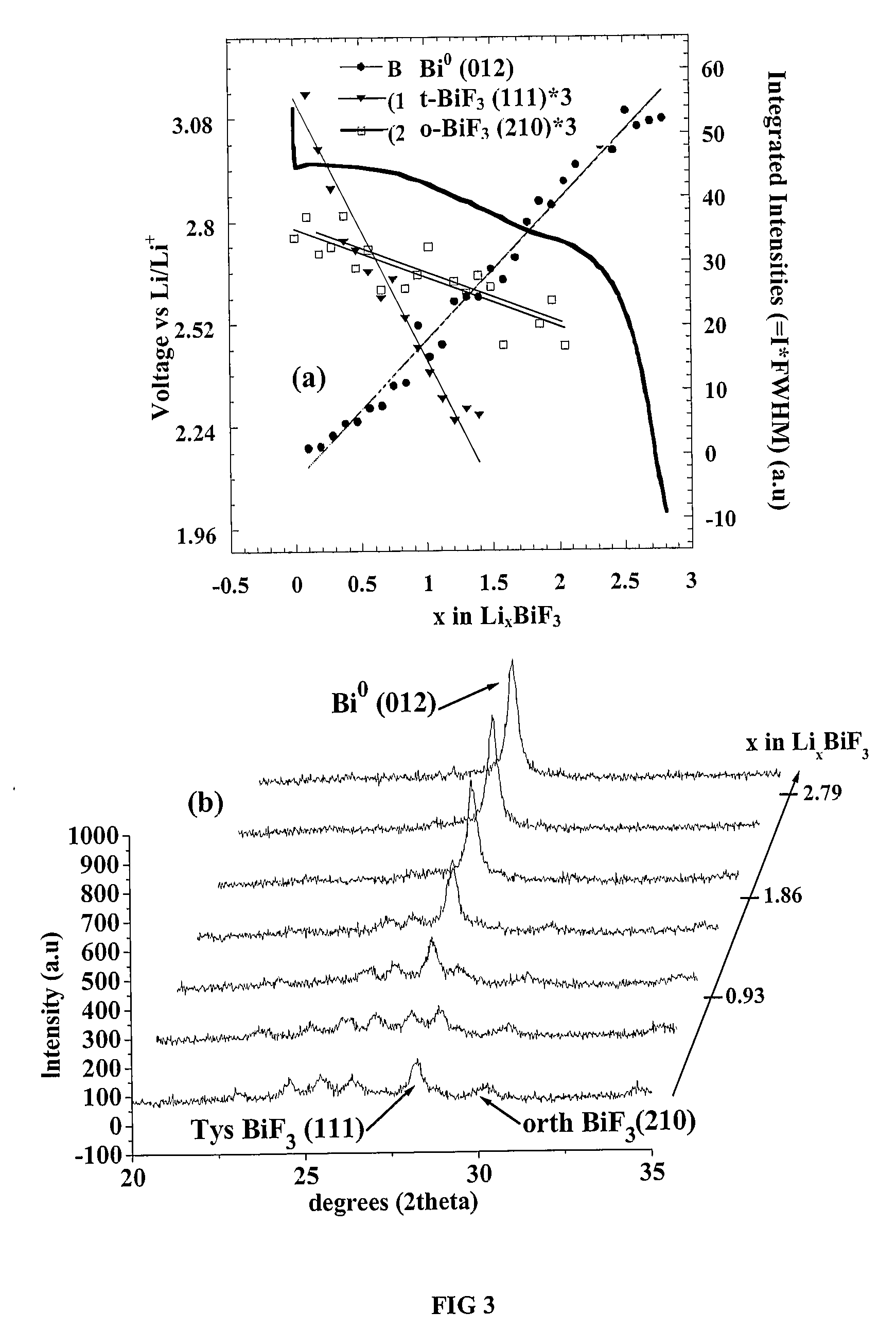Bismuth Fluoride Based Nanocomposites as Electrode Materials
a technology of nanocomposites and fluoride, applied in the direction of non-aqueous electrolyte cells, cell components, electrochemical generators, etc., can solve the problems of reducing the final acceptability of rechargeable cells, affecting the performance of rechargeable cells, and reducing the energy density of applications
- Summary
- Abstract
- Description
- Claims
- Application Information
AI Technical Summary
Benefits of technology
Problems solved by technology
Method used
Image
Examples
example 1
Preparation of the Tysonite and Orthorhombic BiF3 Nanocomposites of the Invention
[0076] a. Tysonite
[0077] In order to prepare the tysonite BiF3 nanocomposites of the present invention, a sample of 85 weight % BiF3, (Alfa Aesar) and 15 weight % carbon of carbon black (Super P, 3M), were milled for one to three hours in a Spex 8000 mill. The high-energy milling cell, as well as the balls, were made out of hardened steel. The high-energy milling cell was sealed and reopened after milling inside a He filled glove box at −80° C. dew point, thus preventing the powder from moisture or oxygen contamination. The resulting inventive tysonite nanocomposites were composed of crystallites of 30 nm or less.
[0078] Orthorhombic BiF3 inventive nanocomposites were prepared by treating tysonite BiF3 nanocomposites with 48% concentrated hydrofluoric acid in a Teflon container. The container then was placed overnight in an oven at 95° C. to let the HF evaporate. The powder thus obtained then was drie...
example 2
Electrode Preparation
[0079] Electrodes were prepared by adding poly-vinylidene fluoride-co-hexafluoropropylene (Kynar 280, Elf Atochem), carbon black (Super P, 3M), and dibutyl phthalate (Aldrich) to the inventive nanocomposites in acetone. The slurry was tape cast, dried for 1 hour at 22° C., and rinsed in 99.8% anhydrous ether (Aldrich) to extract the dibutyl phthalate plasticizer. The electrodes, 1 cm2 disks, or coin cells, typically containing 57 + / −1% inventive nanocomposites and 12+ / −1% carbon black, were tested electrochemically versus Li metal (Johnson Matthey). The coin cells were cycled under controlled temperatures. The batteries were cycled either on an Arbin, a Maccor or a Mac Pile (Biologic). Three different electrolytes were used: 1) LiPF6 salt in a mixture of ethylene carbonate (EC) / propylene carbonate (PC) / diethyl carbonate (DEC) / dimethyl carbonate (DMC) solvents at 1 M, (1:1 ratio by volume) 2) LiPF6 in EC / DMC at 1 M (1:1 ratio by volume) or 3) LiClO4 in EC / DMC at...
example 3
Physical Characterization of the Tysonite and Orthorhombic BiF3 Nanocomposites of the Invention
[0080] a. XRD Analysis
[0081] In order to characterize the structure of the inventive BiF3 nanocomposites, XRD analyses were performed on a Sintag X2 using Cu Kα radiation. The inventive nanocomposites were placed on glass slides and covered with a Kapton film sealed with silicon based vacuum grease inside a glove box to minimize air exposure.
[0082] The XRD patterns of the pristine macro BiF3 powder and of the macro BiF3 powder high-energy milled in He in the presence of 15 wt % of carbon Super P for 1 h, 2 h, 3 h and 4 h are shown on FIG. 1. It is readily apparent from this figure that BiF3 undergoes a phase transformation from the initial orthorhombic phase to a hexagonal Tysonite phase. The calculated lattice parameters of this phase are a=7.100±0.004 Å and c=7.292±0.007 Å.
[0083] After one hour of high-energy milling, the ratio of tysonite / orthorhombic phases has been evaluated as 70...
PUM
| Property | Measurement | Unit |
|---|---|---|
| diameter | aaaaa | aaaaa |
| diameter | aaaaa | aaaaa |
| diameter | aaaaa | aaaaa |
Abstract
Description
Claims
Application Information
 Login to View More
Login to View More - R&D
- Intellectual Property
- Life Sciences
- Materials
- Tech Scout
- Unparalleled Data Quality
- Higher Quality Content
- 60% Fewer Hallucinations
Browse by: Latest US Patents, China's latest patents, Technical Efficacy Thesaurus, Application Domain, Technology Topic, Popular Technical Reports.
© 2025 PatSnap. All rights reserved.Legal|Privacy policy|Modern Slavery Act Transparency Statement|Sitemap|About US| Contact US: help@patsnap.com



